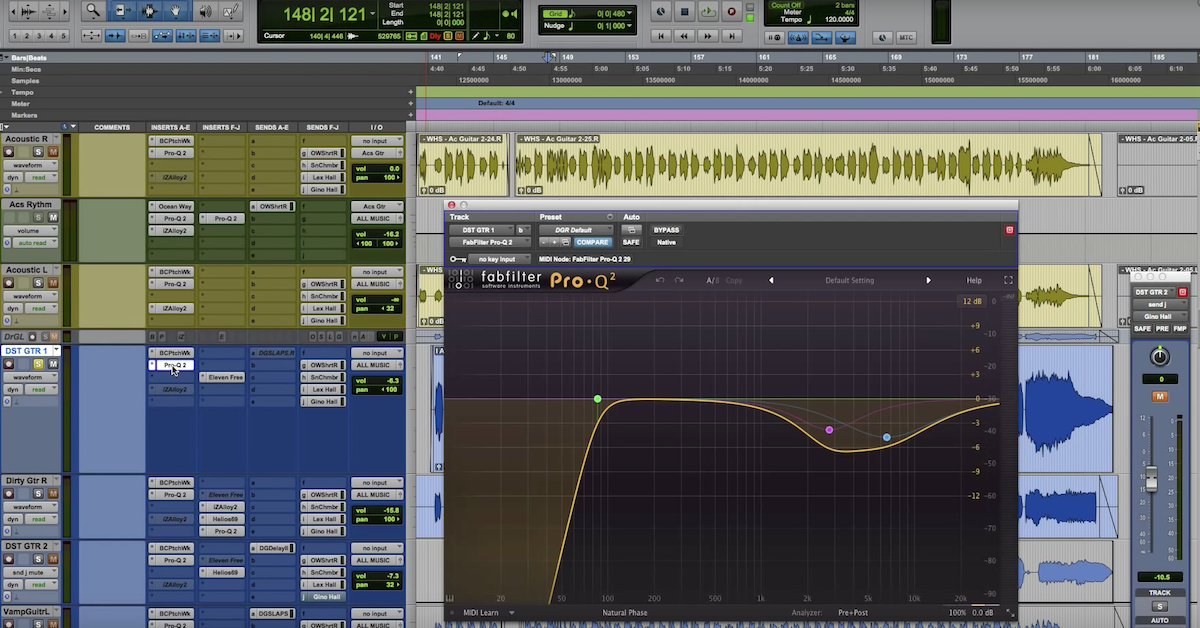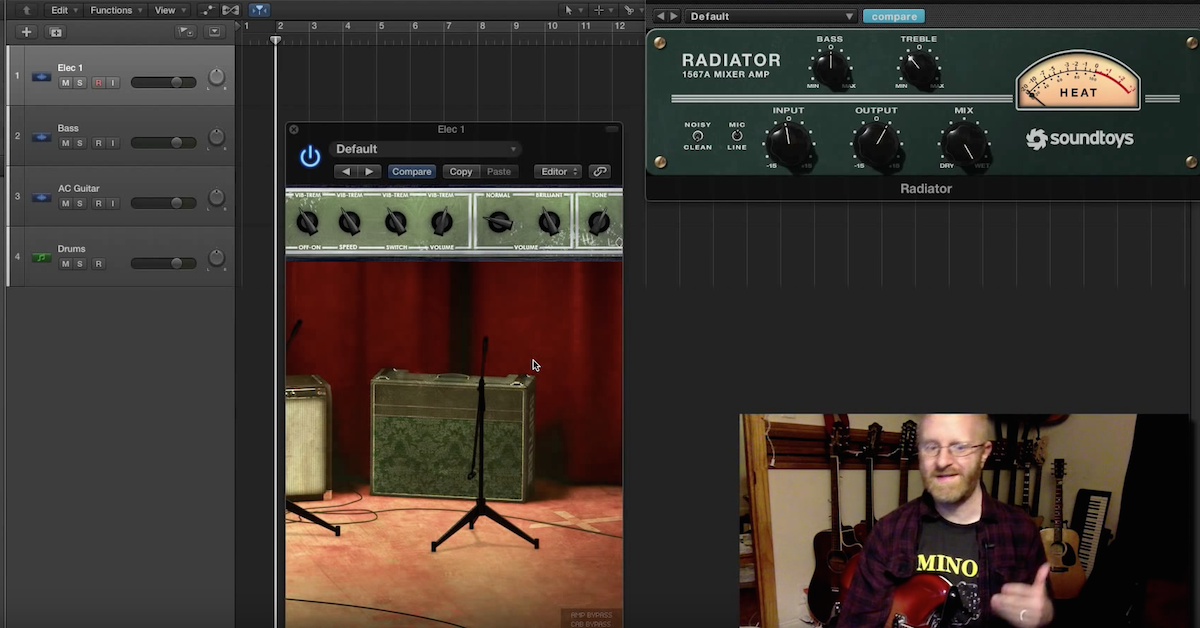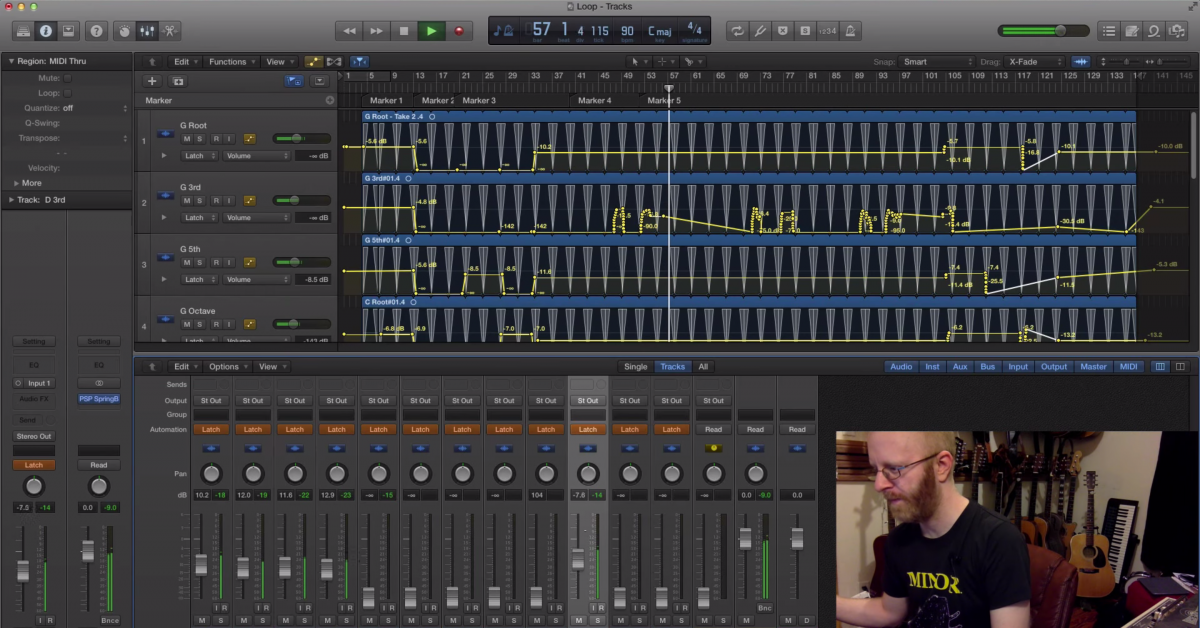Guitar Reamping 101
Reamping is a powerful tool for engineers because it allows engineers to play with the guitar tone and not necessarily worry about committing the tone when we are recording. We just record a direct input signal, just a dry guitar signal and you can keep that on hand in the session if you’re not happy with the guitar tone you printed or with whatever plugins you’re working with, then we can take that DI signal, we can send it out from out DAW and we can send it back into our amplifier so we can play with some new tones and find something that maybe sounds better in the mix.
It just allows for more flexibility in the mix and find a tone you love and play with mic positions, different polar patterns, different amplifiers, whatever. You know, it’s just really flexible, very powerfully way to get good guitar tones.
So you’ll need a computer, DAW of choice — we’re using Pro Tools – then you’ll need a couple of cables that may vary depending on your I/O. I like to have balanced cables if the runs are longer than 20 ft. Just to prevent adding ground hum or signal degradation. Then you’ll need a reamp box. I use the Radial Pro-RMP. Then you’ll obviously need a microphone to record the amplifier. We’ll use an SM57.
If we take a look at the back of my interface, we’ve got outputs 7 & 8. So we’ll send line output number 7 from my interface into the reamp box. From output 7, the other end of that cable goes into the input of our reamp box. Then from the output of the reamp box I’m attaching an unbalanced quarter inch guitar instrument cable which is going into the front of the amp just like if you were plugging a guitar directly into the amplifier itself.
Pretend I’m the client, or you, or a band, your guitar player — whoever. We’re gonna record a DI track just using a plugin in Pro Tools and I’ll show you how to send that back out to reamp and then back to Pro Tools. Here’s the first step. Let’s track a DI guitar. This guitar is going direct into the preamp to send to the instrument input. Let’s record a take and we’ll send it out for reamping.
[recording guitar DI for reamping]
So we’ve recorded a DI guitar. You can see I’ve got the dry signal in Pro Tools. Straight in from the guitar into the preamp, into the DAW. Now we’re gonna send it to reamp, but first I’ll show you guys what you need to do in Pro Tools to get it from A to B.
In Pro Tools you can see we have a dry guitar track, Amplitude for reference but bypassed now. Then we’ve got a reamp guitar track which is where we’ll print. We’ll create a loop from Pro Tools to the amp then back into Pro Tools. We plugged our reamp box into output 7 on the back of my converter. So we’re sending our signal out of output 7 to the reamp box then to the guitar amp then the guitar amp to an SM57, which is plugged into analog input 2 on the interface, which is what our reamp channel is set to record to.
Let’s go ahead and send this out output 7 which is where we have the reamp box plugged in to. Ok, so that’s physical output 7 and we’re gonna want to set that to pre-fader and we can still adjust the gain here to kind of get a hotter less hot, just depending on taste. If I arm this reamp guitar track to record you’ll hear amp noise and amp hum. We’ve completed the loop, let’s reamp this.
[recording reamped electric guitar in Pro Tools]
If we play it back you’ll hear just the reamp 6505. That’s reamping, a cheap and powerful way to record guitars that allows you to be more creative and yours client can just focus on the performance at the time of recording. The Radial box also has a ground hum switch so you can take off any of the AC hum.
I hope I explained it well and in-depth. I tried to kind of go through every step of the process so it was as cut and dry as possible. I appreciate you guys watching and it would mean a lot if you would subscribe to my channel if you haven’t yet. I hope to have tons more informative stuff like this. There’s a lot of it already on the internet and on YouTube but I’d like to contribute to that myself and put some cool videos out there. I’ve got some good mixing tutorials coming out hopefully focusing on some drums soon. So anyway, thanks again for watching guys, be sure to stop by the website: www.equinox-ps.com. Again this is Derek signing off, have a great week.





